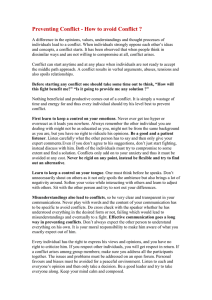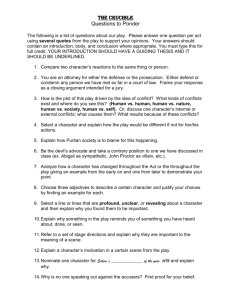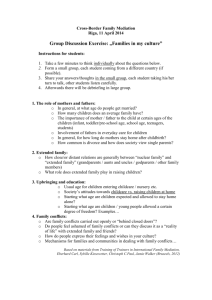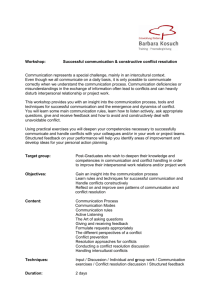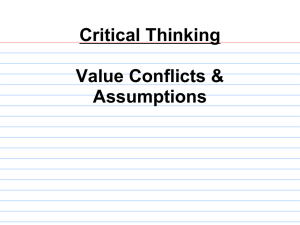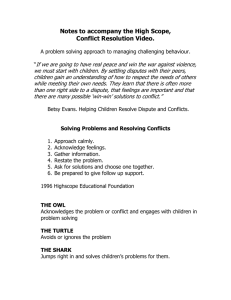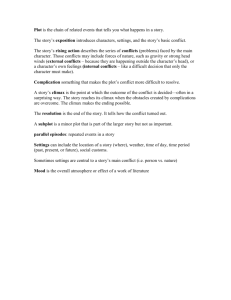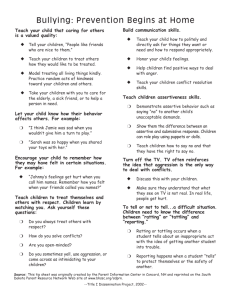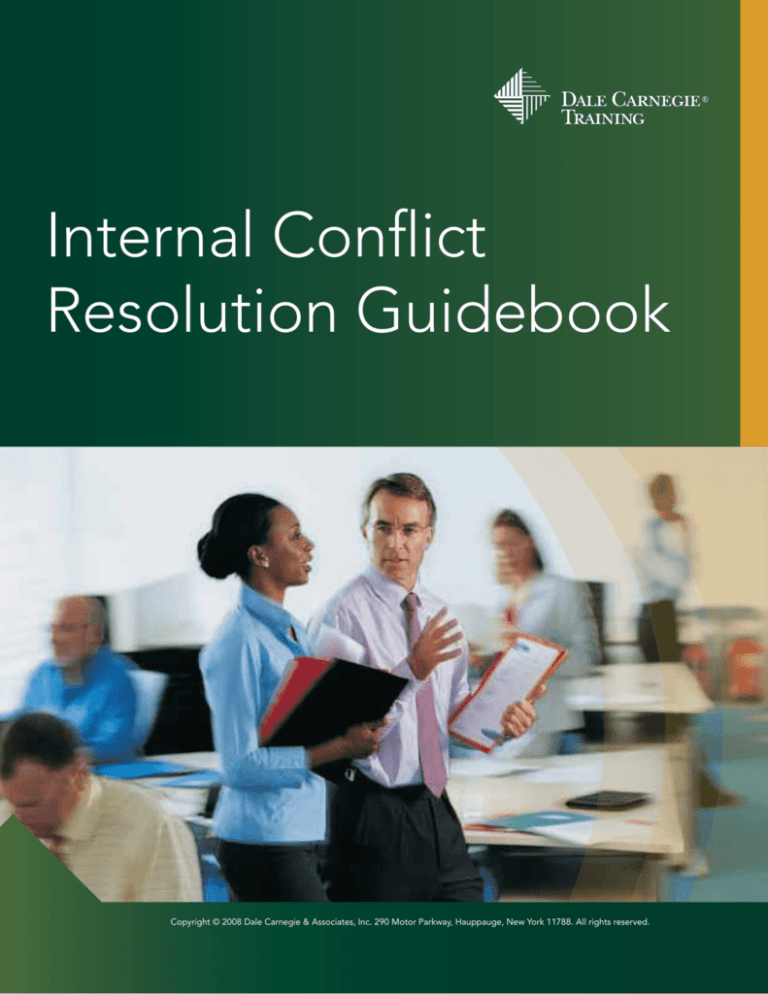
Internal Conflict
Resolution Guidebook
Copyright © 2008 Dale Carnegie & Associates, Inc. 290 Motor Parkway, Hauppauge, New York 11788. All rights reserved.
1
Internal Conflict Resolution
Following these guidelines, you will be able to:
• Understand reactions to conflict in order to better manage attitudes
• Analyze conflict situations to determine best approach to achieve
desired outcomes
• Develop conflict resolution strategies that foster teamwork
Overview
When the elder John D. Rockefeller was setting up the Standard Oil Company,
he said, “The ability to deal with people is as purchasable a commodity as sugar
or coffee, and I will pay more for that ability than for any other under the sun.”
The ability to deal with people is even more important today with the pressures of
our fast-paced environments. Being able to handle conflict in a productive way is
frequently mentioned as one of the most challenging skills for people.
In this guidebook, we will help you reflect on your current approach in handling
conflicts, so you are aware of areas you need to work on. We will then share with
you some effective conflict resolution strategies which will help you foster a more
cooperative environment.
“Don’t be afraid of opposition.
Remember, a kite rises against,
not with, the wind.”
-Hamilton Wright Mabie
2
Conflict Reaction Profile
Record your reaction to the following statements. Read each item carefully and place a
number from the answer scale next to each statement.
Numbering Scale
1 – Seldom
2 – Sometimes
3 – Most of the
1. _____ I can be swayed to someone else’s point of view.
2. _____ I shut down people who I disagree with.
3. _____ I address the issue at hand diplomatically and do not attack the individual.
4. _____ I think that others try to “bully” their way with me.
5. _____ I express my thoughts and beliefs tactfully when they differ from those just expressed.
6. _____ Rather than offer my opinion when I disagree with someone, I keep it to myself.
7. _____ I listen to other people’s point of view with an open mind.
8. _____ I let my emotions get the best of me.
9. _____ I raise my voice to make my point.
10. _____ I tend to belittle other people when making my point.
11. _____ I look for ways to negotiate and compromise with others.
12. _____ I have been told I am too pushy.
13. _____ I make sure I have my opinion heard in any controversy.
14. _____ I think conflict in meetings is necessary.
15. _____ I am the most vocal in meetings when trying to get my point across.
3
Conflict Reaction Profile Score
Scoring:
Add the total score from questions 1, 2, 4, 6, 8, 9, 10, 12, 13, 14, 15
Subtract the sum of the score from questions 3, 5, 7, 11
Total:
What does your score mean?:
1—4:
5—10:
11+
“Passive”
You may be such a pushover that you allow difficult people to walk
all over you. You will benefit from learning to stand up for your ideas and
opinions in a diplomatic and tactful way.
“Assertive”
You are professionally assertive when dealing with people,
particularly difficult people. Continue to be open to listening to different
points of view, and express your ideas and opinions appropriately.
“Aggressive”
You may be so combative that people might avoid
interacting with you. You will benefit from learning to listen and
express your opinions more effectively.
4
Strategies for Reducing Conflict
Process Conflicts:
• Ask yourself, “How much control do I have over this process conflict?”
• Identify the root cause of the problem and analyze the improvement opportunity.
• Talk first to the owner of the process.
• Describe the current problem and get agreement.
• Suggest a workable solution and action plan.
• Follow-through on the plan and give recognition to the owner of the process.
Role Conflicts:
• Ask yourself, “Exactly how do I perceive my role in relation to others involved in this issue?
• Take responsibility for clarifying your role with others involved.
• Be prepared to change your perception of your role.
• Show your willingness to be flexible in achieving your organization’s goals.
• Stay positive. View any role change in terms of the opportunities it presents.
Interpersonal Conflicts:
• Ask yourself, “How much do my personal biases and prejudices affect this relationship?”
• Write down three behaviors that you could change in order to reduce the conflict in this
relationship. Commit to following through on these changes for at least three months.
• Ask the other person involved how you could defuse the existing conflict. Encourage feedback
that might seem brutally honest.
• Put yourself in their position. How do you think they view your commitment to reducing
conflict in your relationship? Why?
• Make a list of 5 strengths that you see in the other person. Then list five ways that
improving this relationship would benefit you.
Direction Conflicts:
• Ask yourself, “Am I clear on the direction or vision?”
• Clarify the discrepancy so that it can be easily described in neutral words and take action.
• Ask permission to address the discrepancy with the other person in a friendly,
nonconfrontational way and gain agreement.
• Use “I” and “we” messages rather than “you” messages.
• If there is a difference in values, always go with the higher value.
• Make authentic commitments.
External Conflicts:
• Ask yourself, “How much control do I have over this factor?”
• Choose to fight battles that are worth the price.
• Put your energy into things you “can do” rather than complain about what you “can’t do.”
• Do something good for others.
• Maintain perspective and a sense of purpose.
• Talk to someone you trust.
5
To learn more about Dale Carnegie’s training
programs on conflict resolution and other
important leadership skills, please go to:
www.dalecarnegie.com/resolution
Conflict Resolution Plan
Use this template to help you create your own action plan.
1. Specific Conflict:
____________________________________________________________________________________
____________________________________________________________________________________
____________________________________________________________________________________
____________________________________________________________________________________
2. People Involved:
____________________________________________________________________________________
____________________________________________________________________________________
____________________________________________________________________________________
____________________________________________________________________________________
3. Plan of Action:
____________________________________________________________________________________
____________________________________________________________________________________
____________________________________________________________________________________
____________________________________________________________________________________
4. Results Expected:
____________________________________________________________________________________
____________________________________________________________________________________
____________________________________________________________________________________
____________________________________________________________________________________
5. Accountability Partner: ______________________________________________________________

